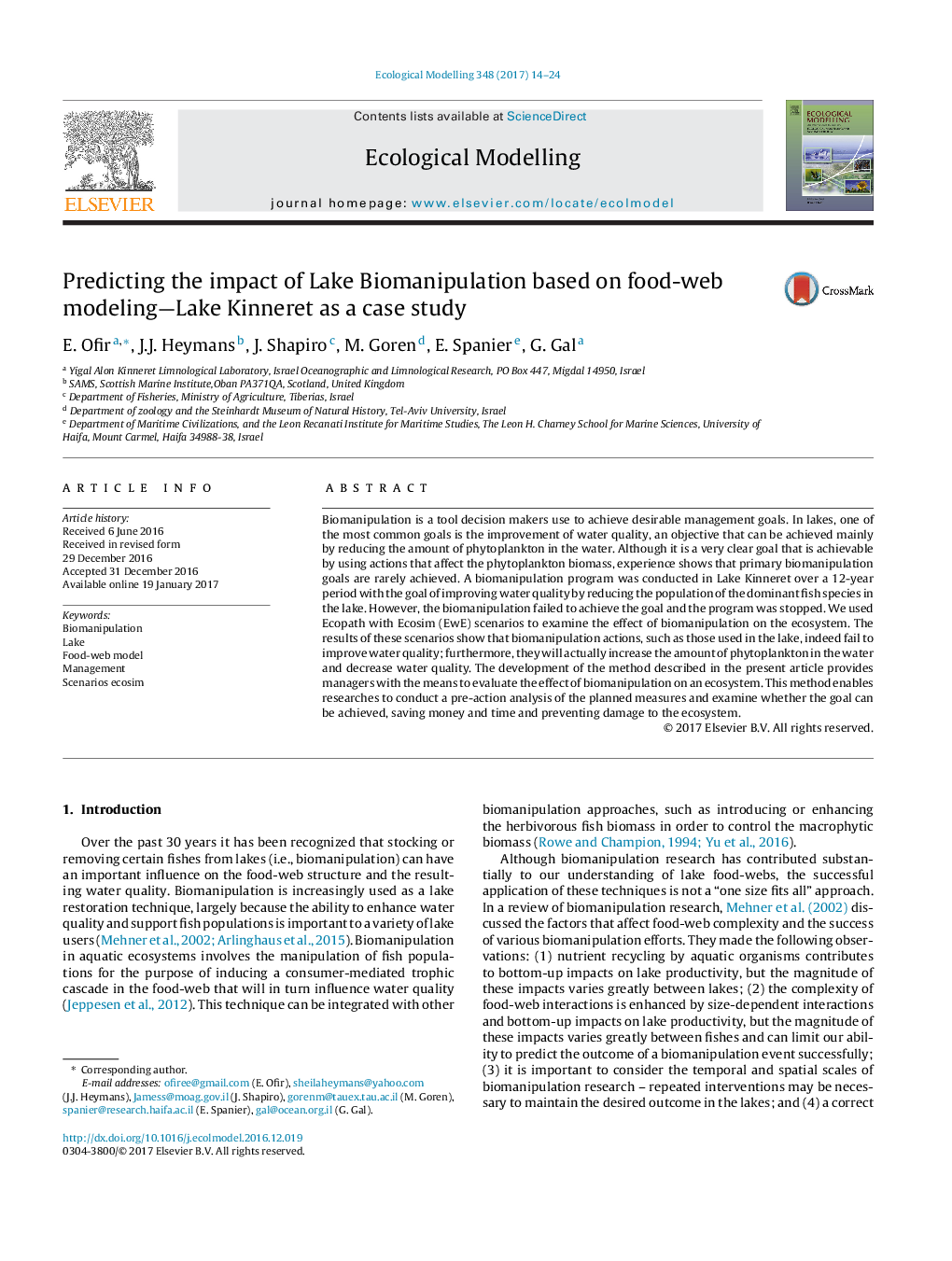| کد مقاله | کد نشریه | سال انتشار | مقاله انگلیسی | نسخه تمام متن |
|---|---|---|---|---|
| 5742315 | 1617399 | 2017 | 11 صفحه PDF | دانلود رایگان |

Biomanipulation is a tool decision makers use to achieve desirable management goals. In lakes, one of the most common goals is the improvement of water quality, an objective that can be achieved mainly by reducing the amount of phytoplankton in the water. Although it is a very clear goal that is achievable by using actions that affect the phytoplankton biomass, experience shows that primary biomanipulation goals are rarely achieved. A biomanipulation program was conducted in Lake Kinneret over a 12-year period with the goal of improving water quality by reducing the population of the dominant fish species in the lake. However, the biomanipulation failed to achieve the goal and the program was stopped. We used Ecopath with Ecosim (EwE) scenarios to examine the effect of biomanipulation on the ecosystem. The results of these scenarios show that biomanipulation actions, such as those used in the lake, indeed fail to improve water quality; furthermore, they will actually increase the amount of phytoplankton in the water and decrease water quality. The development of the method described in the present article provides managers with the means to evaluate the effect of biomanipulation on an ecosystem. This method enables researches to conduct a pre-action analysis of the planned measures and examine whether the goal can be achieved, saving money and time and preventing damage to the ecosystem.
Journal: Ecological Modelling - Volume 348, 24 March 2017, Pages 14-24